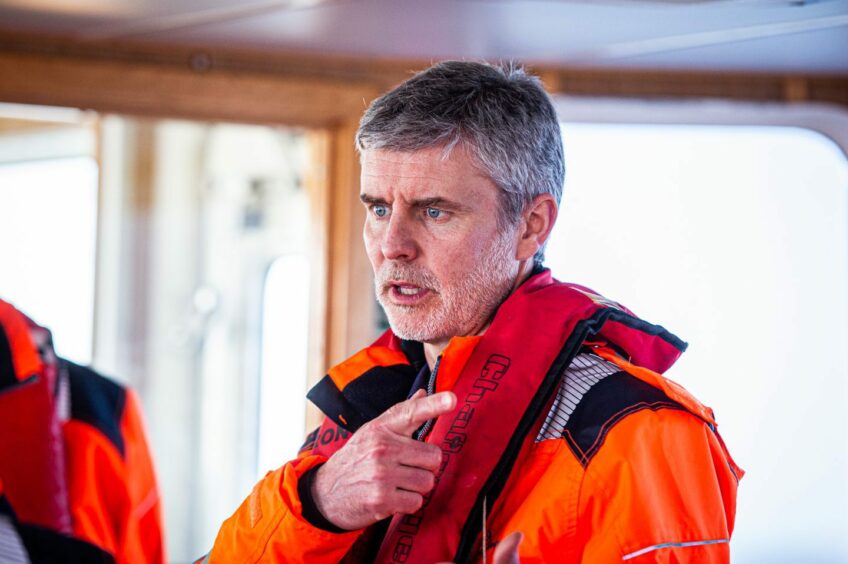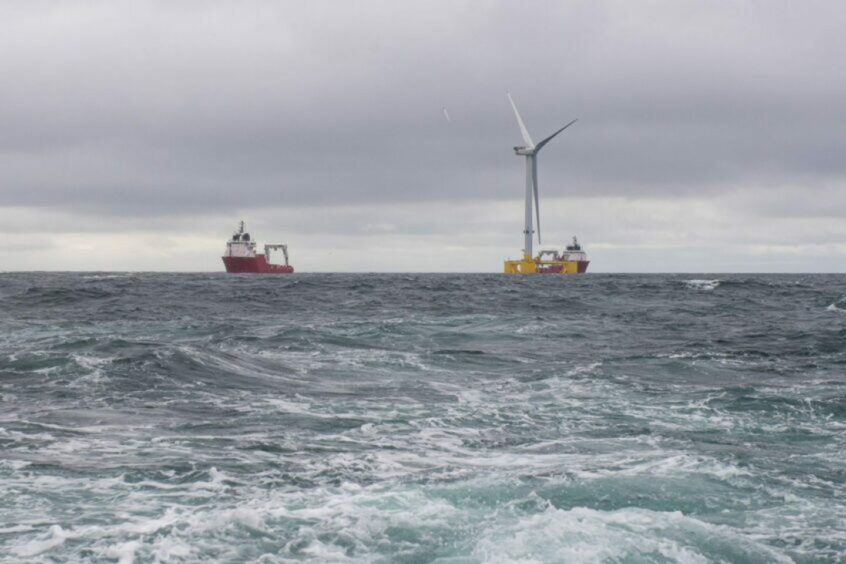
The approval of Flotation Energy and Vargronn’s up-to-560MW Green Volt floating offshore wind farm promises a major boost to the supply chain in Aberdeen and the north-east.
The project, to be based off Aberdeenshire’s east coast near Peterhead, is expected to represent a potential investment of £3 billion.
Flotation has previously said it aims to spread a portion of the funds among companies across Aberdeen and the Northeast, with the group’s chief executive, Nicol Stephen, stating: “We are already drawing on the world class energy skills and experience of the region – and now look forward to doing far more.”
Speaking to Energy Voice, Flotation Energy general manager Barry MacLeod said: “We want to help encourage the Scottish supply chain and have a good proportion of that anchored here.”
As a floating wind project, he noted that Green Volt shares more similarities with oil and gas projects than traditional fixed bottom wind farms.
“The oil and gas skill set is very much in existence in Aberdeen,” he said. “We see that as a great opportunity for engineering in terms of the marine marshalling and logistics.
“We’ve already got those skills here, so there’s an opportunity for the supply chain without a doubt to transition across.”
Port facilities
In addition, Flotation is currently in talks with ports across Northeast Scotland, including Aberdeen, Peterhead, Montrose, Nigg, Invergordon and Cromarty.
“We’re hoping that these ports will be ready and have the ability to provide the services that we need,” MacLeod said.
“We’re not yet at the stage of selecting a port, but there’s a benefit to the project if it’s more local because it’s closer to the site.”
Scotland has been pushing investment in its port facilities to support future fixed-bottom and floating offshore wind projects. Two port expansion projects were chosen to advance in the Scottish Government’s Strategic Investment Model (SIM) – the Port of Cromarty Firth Expansion and the Port of Nigg Deepwater Quay Expansion.
“We’re hopeful that we can have final assembly and storage of these units in some of the local ports, such that we can use that as the central base and then be towing from there,” MacLeod added.
Green Volt
A portion of the power produced from the Green Volt offshore wind farm will be used to electrify and decarbonise offshore oil and gas installations in the North Sea, with the excess going to the UK grid.
While the exact assets have yet to be confirmed, the wind farm could provide power to platforms within 10-20km of the project, including in the outer Moray Firth cluster.
“We’re looking at probably four or five assets that would be tying back to the Green Volt Wind Farm,” MacLeod noted.
CNOOC’s Buzzard oilfield has been previously reported as a potential candidate to use power from Green Volt.
“At this range, the wind farm has the capacity to provide a likely minimum of 100MW to oil and gas platforms in the region,” he said.
A minimum of 20% will go to electrify the platforms, but this can be revised up or down depending on rising demand from oil and gas assets.
“The wind farm is going to be operational for around 30 years,” MacLeod said. “We expect the wind farm to outlive the oil and gas assets. As those operations cease production, we’ll then transfer that power back to the grid.”
The ultimate capacity of the wind farm will be determined by how many assets ultimately sign power purchase agreements.
“As it stands at the moment, we have indications that we would be able to go to that maximum end of the range,” MacLeod said. “Certainly in excess of 500MW for Green Volt.
“But we need to have those power agreements with the oil and gas operators signed to enable that to happen.”
Next steps
With onshore consent announced earlier this month, Marine Scotland approved the offshore development of the Green Volt floating offshore wind farm, clearing the last hurdle to reach its targeted first power in 2029 with commissioning by 2030.
The project is a 50-50 joint venture between Flotation Energy and Norway’s Vargronn, a joint venture between Plenitude (Eni) and HitecVision.
While its maximum power is still to be determined, it will deliver at least 300MW using a potential maximum of 35 turbines.
The project is also the first consented project from Scotland’s Innovation and Targeted Oil and Gas (INTOG) leasing round.
Electrification of offshore energy assets has been placed in the spotlight by the North Sea Transition Authority (NSTA) through its recently released OGA Plan.
The report aims to push the UK’s decarbonisation targets, with electrification targets for platforms operating on the North Sea among its provisions.
New developments will need to use electricity or other low-carbon power instead of diesel or gas generators that are commonly used.
“The next steps for Green Volt will be to finalise the engineering and the contract strategy and actually start placing some of these long-lead contracts,” MacLeod said.
“We’re working on the front-end engineering design of that system right now.
“And starting to play some of those contracts will be part of the critical path to delivering that 2029 first power date.”
Recommended for you


 © Supplied by KATH FLANNERY / DC T
© Supplied by KATH FLANNERY / DC T © Supplied by CNOOC
© Supplied by CNOOC